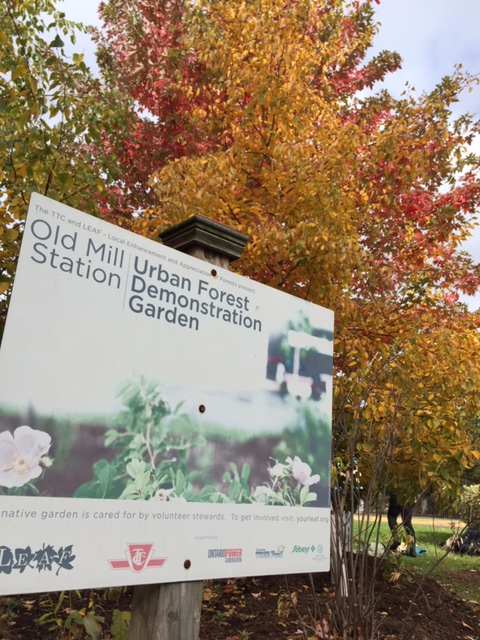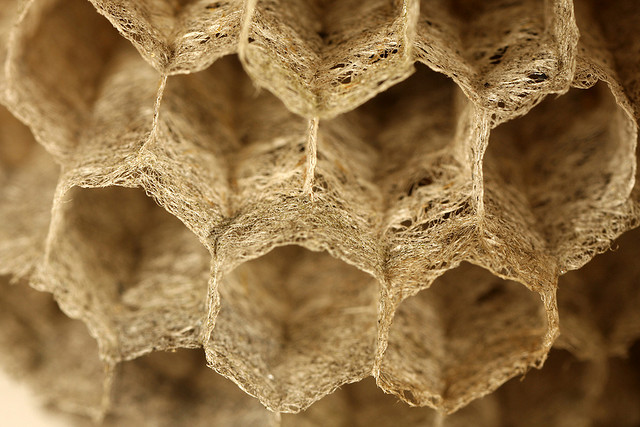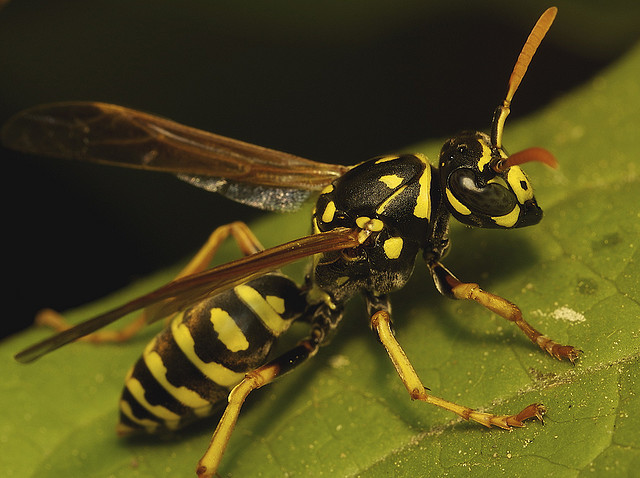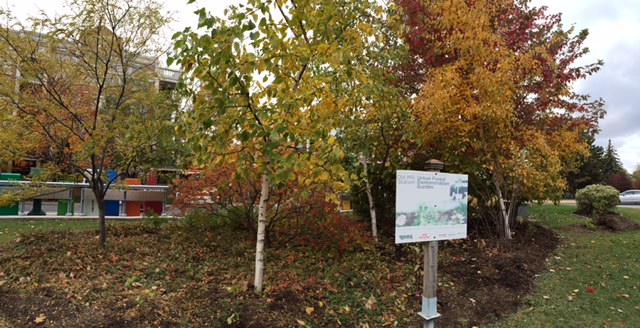For the past two summers, the storage locker at the Old Mill Urban Forest Demonstration Garden has hosted a colony of wasps.

While our Garden Steward volunteers have managed to work in harmony with the wasps for the past two seasons, we were not interested in another year of tip-toeing around our storage locker to get our garden tools. That got us wondering… how should we go about (humanely) removing the nests? First of all, we had to figure out what kind of wasps we were dealing with.
After a bit of research, we confirmed that our uninvited friends at the Old Mill garden were European paper wasps (Polistes dominula).

Wasps and bees are members of the Hymenoptera order of insects (so are ants!) This large and diverse group of invertebrates is very ecologically and (for some) economically important. The difference between bees, and wasps often gets a little confusing though, so here is a refresher on what makes them different and how you can tell them apart.
Bees tend to be pretty fuzzy, and their diet consists of pollen and nectar. This makes them very important pollinators. Many bee species are capable of stinging in defence, but they do die afterwards. A number of different species can be found in Ontario but the most common and readily identified are the honeybee and bumblebee (the latter don’t sting – they’re just big and loud). Bees nest in hives typically made of a waxy material (ie. beeswax)
Wasps are a more complicated group of insects. They have relatively hairless bodies when compared to bees and are primarily predators or scavengers. This makes them important in keeping populations of other insects (like caterpillars) in check. There are three broad categories of wasps: parasitic, solitary hunting and social wasps.
The European paper wasp belongs to the category of social wasps. This the group of wasps that are the most commonly involved in negative human interactions (ie. stings).
Social wasps can be further broken down into three subcategories: yellow jackets, hornets and umbrella wasps. The European paper wasp is considered an umbrella wasp, as it makes nests of papery cells that are not enclosed, primarily predate insects and sting only when defending their hive.
European paper wasps are considered an invasive species in North America, hailing originally from primarily the Mediterranean area of Europe and North Africa. Queens can store sperm and hide away in storage material so they are easily transported to new locations and able to initiate a new colony. They have also spread to Australia and South America. This wasp was first noticed in Western United states in the late 1970s and it has spread rapidly throughout North America since then.

European Paper Wasps are frequently mistaken for yellow jackets, but you can tell them apart by looking at the narrowing between their thorax and abdomen and their antennae. Yellow jackets have black antennae and the paper wasps are orange and black in colour. Paper wasps are very protective of their nests, but they don’t tend to sting unless the threat is within inches of the nest. However, given that preferred nest locations are in protected, often hidden places, this increases negative encounters with the wasps because their location often isn’t known until it’s too late.
If you find yourself encountering a nest or hive, take a moment to determine what kind of species you are dealing with. Knowing what type of bee or wasp you are dealing with will help you determine the next best step, whether that is removing the nest, calling in professional help, or leaving the critters to continue their important environmental work.

As for LEAF and the Old Mill Demonstration Garden, we will be removing the nest this winter to ensure there are no queens or worker wasps present, and we’ll keep an eye out to make sure no new colony sets up shop next spring. Since the European paper wasp seems to prefer wood as a substrate for their nests, we might line the roof of our storage locker with tin foil to make it less attractive to the wasps (and protect our stewardship team from alien transmissions). If you have any thoughts or suggestions, let us know!
LEAF’s Urban Forest Demonstration Gardens are supported Ontario Power Generation’s Biodiversity Program and the Toronto Transit Commission.
Erin MacDonald is LEAF’s Volunteer and Stewardship Coordinator and Jen Vander Vecht is LEAF’s Residential Planting Programs Assistant.
LEAF in a non-profit organization dedicated to the protection and promotion of the urban forest through planting, stewardship and education programs. The LEAF Backyard Tree Planting Program is designed to make planting native trees and shrubs easy and affordable! The Backyard Tree Planting Program is supported by the City of Toronto, the Regional Municipality of York, the City of Markham, the Town of Newmarket, the Town of Ajax, Toronto Hydro and Ontario Power Generation.
